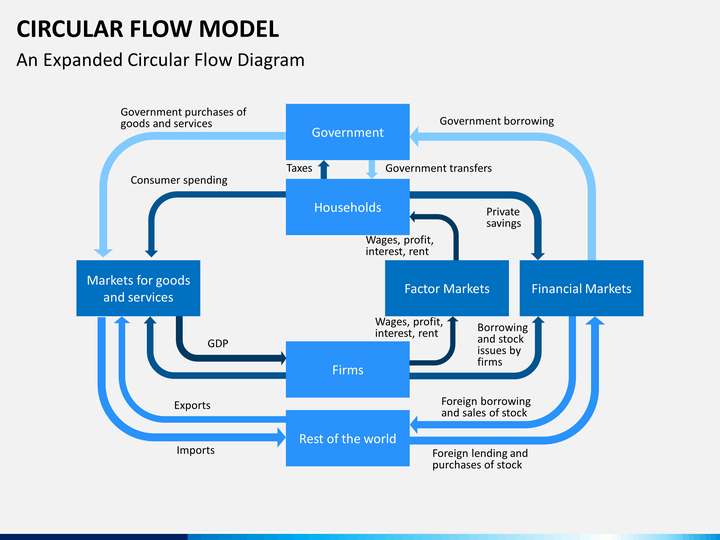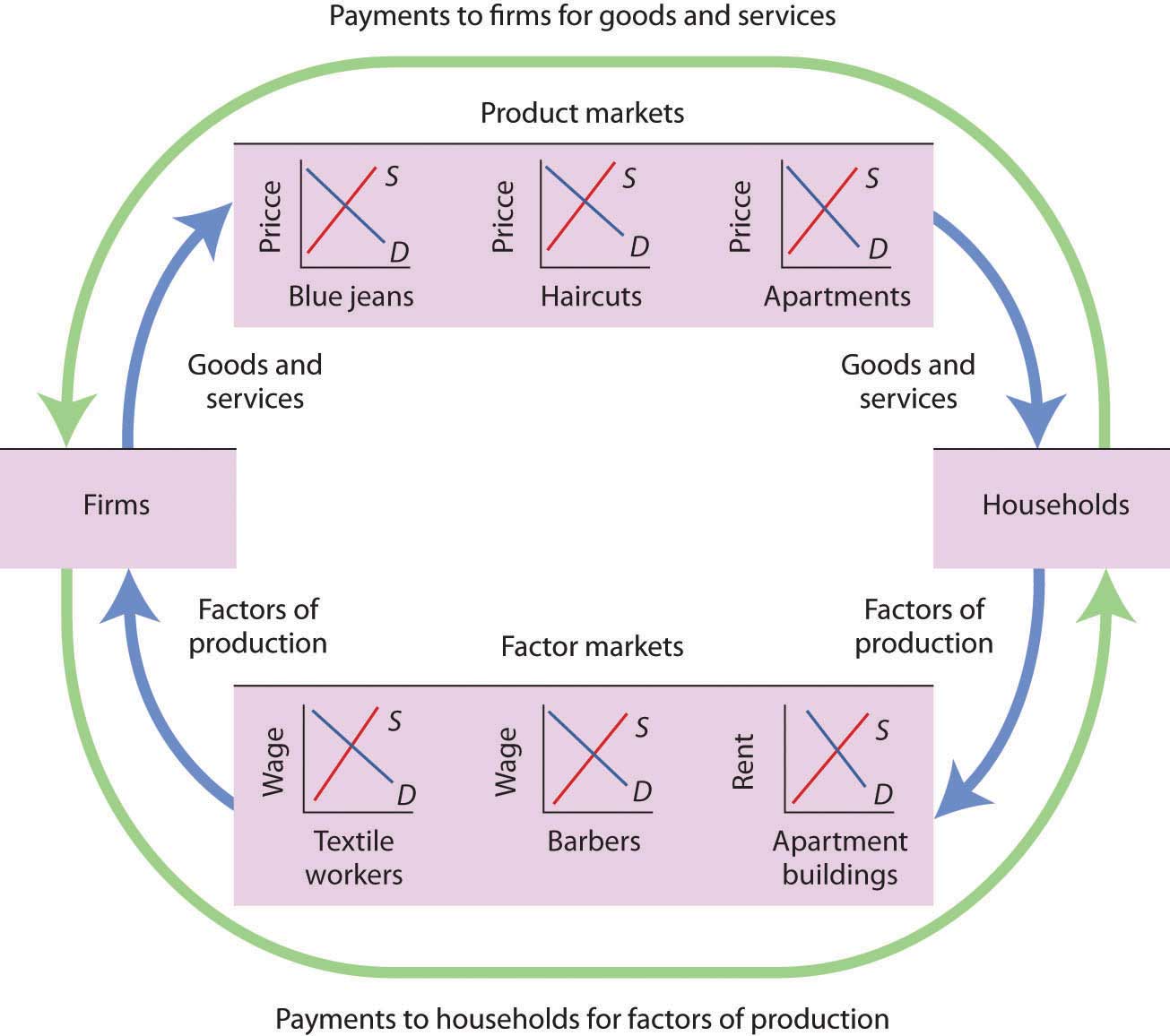
It launched the Evergreen Services Agreement (ESA) program, with installation, maintenance, and removal of its flooring bundled under one monthly fee, making it possible for the company to keep used flooring materials out of landfills and recycle the valuable raw materials in them. In the 1990s its founder and CEO, Ray Anderson, declared that he wanted Interface to become “the first sustainable corporation in the world.” To achieve that, the company would shift its business model from selling to leasing. Consider the case of Interface, an Atlanta-based commercial flooring company. Shrinking their environmental footprint, trimming operational waste, and using expensive resources more efficiently are certainly appealing to CEOs.īut creating a circular business model is challenging, and taking the wrong approach can be expensive. The government is added to the basic circular flow model (two-sector model) in the three-sector circular flow model.It’s easy to see why more and more manufacturing companies are talking about what’s often called the circular economy-in which businesses create supply chains that recover or recycle the resources used to create their products. Here are the most common combinations of economic factors in the circular flow. The circular flow model can be expanded in several ways depending on the economic sectors involved. The circular flow of income also represents three ways to calculate the national income: Goods, money, and services are the three major flows in the economy. In the economy, goods and services move in one direction while money flows in the other way. In addition to firms, households and governments, there is also the financial sector that enables money exchange and helps to convert savings into investments for economic development. Foreign sector: the foreign sector is responsible for exporting and importing goods, thus facilitating an exchange of money between the domestic economy and the rest of the world.Government: the government receives taxes from firms and households, then uses tax revenues to pay for public services.In the real world, the model is a bit more complicated. Households: individuals who receive wages from firms while simultaneously purchasing the goods and services from the firms.Firms: companies that produce goods and pay wages to employees.In the basic model, the circular flow of income consists of two components: This ongoing exchange of money for goods and services keeps both the bakery and the residents prosperous, illustrating the concept of the circular flow of income. The residents then use their earnings to buy delicious bread and pastries from the bakery. The bakery employs townspeople, paying them wages for their work. Imagine a small town with a bakery and its residents.

Households earn money through wages and salaries, then spend that money on goods and services provided by businesses, ensuring a continuous flow of funds that keeps the economy thriving. The circular flow of income model is a simple way to visualize how money constantly circulates between households and businesses within an economy. Ready to unravel the economic forces that drive our world? Let's get started! What is the Circular Flow of Income? This comprehensive guide will provide you with a clear understanding of the interconnected nature of our economy. Finally, see an example of the circular flow of income. We will also uncover the complexities of the expanded circular flow of income models and the roles of injections and leakages.
#CIRCULAR FLOW MODEL HOW TO#
Learn how to decipher the circular flow of income diagram, explore the different types of flow in the circular flow of income, and examine the two-sector circular flow of income model. The other is the flow of goods and services from individuals to firms and back again: people go to work to produce things for daily consumption.ĭiscover the fascinating circular flow of income concept and its impact on economic stability. One is the flow of money from firms to individuals and back to firms again: people earn money from working which they use to purchase goods and services. Two cycles are moving in opposite directions in an economy. Measuring Domestic Output and National Income.



 0 kommentar(er)
0 kommentar(er)
